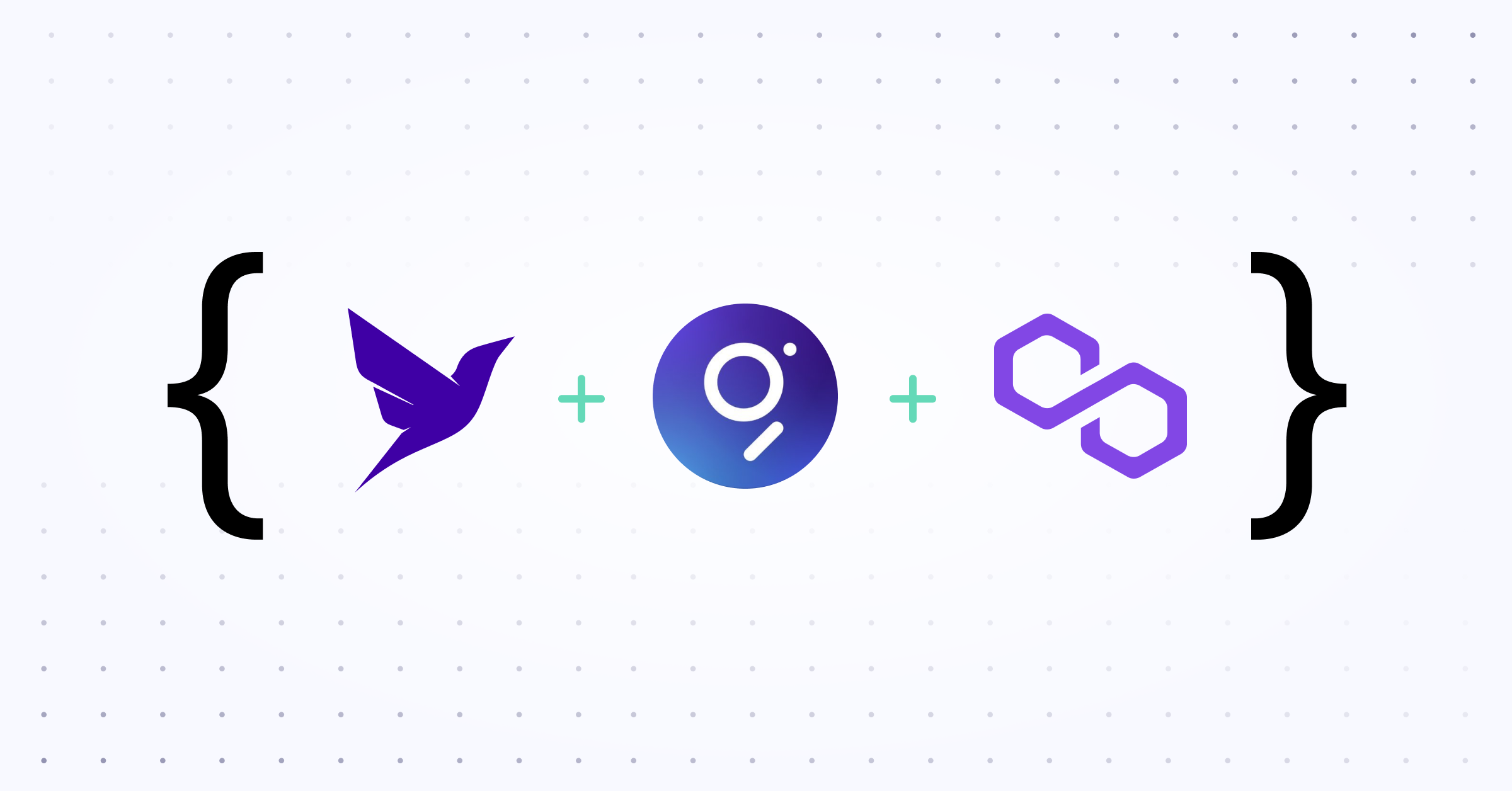Ethereum DApp User Profile Management
Learn how to securely manage user profiles and data in your Ethereum decentralized applications (DApps) using best practices and smart contracts.
Learn how to securely manage user profiles and data in your Ethereum decentralized applications (DApps) using best practices and smart contracts.
Building secure and user-friendly decentralized applications (DApps) requires careful consideration of user data and authentication. This article outlines essential practices for handling user data securely in your DApp, ensuring user privacy while leveraging the benefits of blockchain technology.
Don't store sensitive user data directly on the blockchain. Storing data on the blockchain is expensive and publicly viewable.
// Don't do this!
contract UserProfile {
mapping(address => string) public emails;
}Use MetaMask for user authentication. MetaMask provides a way for users to securely manage their Ethereum accounts and interact with your DApp.
// Check if MetaMask is installed
if (typeof window.ethereum !== 'undefined') {
// Request account access
window.ethereum.request({ method: 'eth_requestAccounts' });
}Use the user's Ethereum address as a unique identifier. This address can be used to associate data with a specific user.
const userAddress = await window.ethereum.request({ method: 'eth_requestAccounts' })[0];Store user profile data off-chain. Consider using a centralized database like Firebase or a decentralized storage solution like IPFS.
// Example using Firebase
import { getFirestore, doc, setDoc } from 'firebase/firestore';
const db = getFirestore();
await setDoc(doc(db, "users", userAddress), {
name: "John Doe",
email: "john.doe@example.com"
});Hash sensitive data before storing it off-chain. This adds an extra layer of security.
import { sha256 } from 'js-sha256';
const hashedEmail = sha256(email);Allow users to disconnect their accounts. This is important for security and privacy.
// Example using MetaMask API (not directly available)
// You'll need to provide a way for users to trigger this action
window.ethereum.request({ method: 'eth_disconnect' }); Educate users about security best practices. Encourage them to use strong passwords and be aware of phishing scams.
This JavaScript code demonstrates secure user authentication and data storage in a decentralized application (DApp). It uses MetaMask for user authentication, leveraging the user's Ethereum address as a unique identifier. User data, including a hashed email address for security, is stored off-chain in Firebase Firestore. The code provides functionality for connecting to MetaMask, saving and loading user profiles, and disconnecting from MetaMask. Security considerations include implementing Firebase Security Rules, input validation, protecting API keys, and educating users about security best practices. This example serves as a starting point for building secure DApps, and developers should adapt and expand upon these concepts to meet their application's specific security requirements.
This code example demonstrates how to securely authenticate users and store their data in a decentralized application (DApp) using MetaMask, Firebase, and best security practices.
1. Project Setup:
npx create-react-app my-dapp
cd my-dapp
npm install ethers firebase js-sha256mkdir my-dapp-backend
cd my-dapp-backend
npm init -y
npm install firebase-admin js-sha2562. Frontend (src/App.js):
import React, { useState, useEffect } from 'react';
import { ethers } from 'ethers';
import { initializeApp } from 'firebase/app';
import { getFirestore, doc, setDoc, getDoc } from 'firebase/firestore';
import { sha256 } from 'js-sha256';
// Replace with your Firebase config
const firebaseConfig = {
// ...
};
const app = initializeApp(firebaseConfig);
const db = getFirestore(app);
function App() {
const [userAddress, setUserAddress] = useState(null);
const [name, setName] = useState('');
const [email, setEmail] = useState('');
useEffect(() => {
connectToMetaMask();
}, []);
const connectToMetaMask = async () => {
if (typeof window.ethereum !== 'undefined') {
try {
await window.ethereum.request({ method: 'eth_requestAccounts' });
const provider = new ethers.providers.Web3Provider(window.ethereum);
const accounts = await provider.listAccounts();
setUserAddress(accounts[0]);
} catch (error) {
console.error('Error connecting to MetaMask:', error);
}
} else {
alert('Please install MetaMask!');
}
};
const handleNameChange = (event) => setName(event.target.value);
const handleEmailChange = (event) => setEmail(event.target.value);
const saveProfile = async () => {
try {
const hashedEmail = sha256(email);
await setDoc(doc(db, 'users', userAddress), {
name,
hashedEmail,
});
console.log('Profile saved!');
} catch (error) {
console.error('Error saving profile:', error);
}
};
const loadProfile = async () => {
try {
const userDoc = await getDoc(doc(db, 'users', userAddress));
if (userDoc.exists()) {
const userData = userDoc.data();
setName(userData.name);
// We don't load the email as it's hashed
}
} catch (error) {
console.error('Error loading profile:', error);
}
};
const disconnect = () => {
// This is a simplified example,
// you might need to handle state updates and UI changes
setUserAddress(null);
};
return (
<div>
{!userAddress ? (
<button onClick={connectToMetaMask}>Connect with MetaMask</button>
) : (
<div>
<p>Connected as: {userAddress}</p>
<input type="text" placeholder="Name" value={name} onChange={handleNameChange} />
<input type="email" placeholder="Email" value={email} onChange={handleEmailChange} />
<button onClick={saveProfile}>Save Profile</button>
<button onClick={loadProfile}>Load Profile</button>
<button onClick={disconnect}>Disconnect</button>
</div>
)}
</div>
);
}
export default App;3. Explanation:
disconnect function is provided. You'll need to implement the actual disconnection logic based on your application's requirements.4. Security Considerations:
This example provides a starting point for building secure DApps. Remember to adapt and expand upon these concepts to meet the specific security requirements of your application.
General Security:
User Data:
Authentication:
Decentralization:
User Education:
By following these best practices and staying informed about the latest security threats, you can build DApps that are both secure and user-friendly.
| Best Practice | Description | Code Example |
|---|---|---|
| Don't store sensitive data on-chain | Blockchain data is public and immutable. Storing sensitive data directly on-chain compromises user privacy. | // Don't do this! mapping(address => string) public emails; |
| Use MetaMask for authentication | Leverage MetaMask for secure user account management and DApp interaction. | window.ethereum.request({ method: 'eth_requestAccounts' }); |
| Use Ethereum address as a unique identifier | The user's Ethereum address serves as a secure and reliable way to link off-chain data. | const userAddress = await window.ethereum.request({ method: 'eth_requestAccounts' })[0]; |
| Store user data off-chain | Utilize off-chain storage solutions like Firebase (centralized) or IPFS (decentralized) for user data. | await setDoc(doc(db, "users", userAddress), { name: "John Doe", email: "john.doe@example.com" }); |
| Hash sensitive data | Enhance security by hashing sensitive data like emails before storing them off-chain. | const hashedEmail = sha256(email); |
| Enable account disconnection | Allow users to disconnect their MetaMask accounts from your DApp to enhance privacy. | window.ethereum.request({ method: 'eth_disconnect' }); |
| Educate users about security | Promote security awareness by guiding users on strong passwords and phishing prevention. |
By adhering to these security principles, developers can harness the power of blockchain technology while safeguarding user data and fostering trust in their DApps. Remember that DApp security is an ongoing process, requiring vigilance, adaptation to emerging threats, and a commitment to user education. By prioritizing these measures, developers contribute to a more secure and trustworthy decentralized ecosystem.
 A Comprehensive Guide to Metamask: Setting up, Integrating, and ... | Metamask is a popular Ethereum wallet that allows users to manage their Ether and interact with decentralized applications (DApps) on the…
A Comprehensive Guide to Metamask: Setting up, Integrating, and ... | Metamask is a popular Ethereum wallet that allows users to manage their Ether and interact with decentralized applications (DApps) on the… Building an Ethereum Firebase User profile Dapp (Part 1) | by ... | Using Truffle, Web3, Solidity, Firebase, and Vue/Vuex/Vuetify
Building an Ethereum Firebase User profile Dapp (Part 1) | by ... | Using Truffle, Web3, Solidity, Firebase, and Vue/Vuex/Vuetify Building scalable dApps with Ethereum, Polygon and Fauna | Fauna combines the relational power, strong consistency, and schema capabilities of a relational database with the flexibility and scalability of documents, all delivered as a Cloud API with zero engineering operations.
Building scalable dApps with Ethereum, Polygon and Fauna | Fauna combines the relational power, strong consistency, and schema capabilities of a relational database with the flexibility and scalability of documents, all delivered as a Cloud API with zero engineering operations. Ethereum provider API | MetaMask developer documentation | See the MetaMask Ethereum provider API reference.
Ethereum provider API | MetaMask developer documentation | See the MetaMask Ethereum provider API reference.